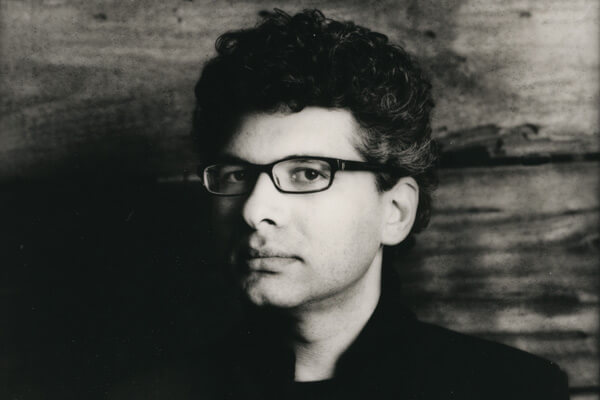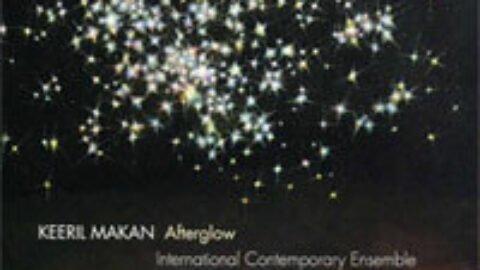 It’s probably true that the myth of the suffering artist is well and truly dead – if Duchamp’s pissoir was the spade, then the Zen-detachment of 4’33” was the shovel – but that didn’t make it any less startling to read Keeril Makan’s unvarnished portrait of his recent struggles with depression, printed this past January in The New York Times:
It’s probably true that the myth of the suffering artist is well and truly dead – if Duchamp’s pissoir was the spade, then the Zen-detachment of 4’33” was the shovel – but that didn’t make it any less startling to read Keeril Makan’s unvarnished portrait of his recent struggles with depression, printed this past January in The New York Times:
The act of composing is in a dynamic relationship with my emotional life. As a result, my compositions are informed – sometimes quite viscerally – by my depression. Listening to the progression of my work over the past decade provides a sonic map of my journey from darkness to a place of relative openness and light, a transformation made possible through self-care and mindfulness meditation.

It’s not difficult to see where Makan is coming from in shedding light on this sensitive subject, as one of his former teachers, Jorge Liderman, tragically committed suicide in 2008. Even so, the disturbance of emotional equilibrium has long been an occupational hazard for composers: to prosper in the field, one need be focused to a fault, always staying one step ahead in the rat race for prizes and commissions. It’s all too easy to lose perspective, to forget how to take a deep breath every once in awhile. Yet if the music compiled on Makan’s new portrait disc Afterglow is any evidence, relearning how to breathe is precisely what has driven the MIT professor’s creative practice over the past few years. For as Makan notes, the trajectory leading from, say, the Iraq protest piece The Noise Between Thoughts (recorded on Tzadik 8053) to the compositions compiled on Afterglow – all penned between 2005 and 2009 – is one stretching from discord to concord, from imbalance to a kind of sangfroid. Static, unhurried, and quietly self-assured, Makan’s latest work seems to exist in something approaching the Buddhist Suddhāvāsa, an alternate plane or “pure land.”
Technically, the works on Afterglow all feature an extremely slow rate of harmonic rhythm – drones, whether overt or implied, are near-omnipresent. In Makan’s stylistic profile, the emphasis on continuity and “organic” growth links two seemingly disparate aesthetics: all-American minimalism and French spectralism. His educational pedigree certainly bears out the unlikely synthesis, for Makan studied in Paris with the second-generation spectralist Philippe Leroux, while Liderman has on more than one occasion been dubbed the Latin-American Steve Reich. Writing about the present disc’s title work, a fifteen-minute-long solo piano divagation on middle C, Makan speaks of the concept of sonic “attunement” – an attentiveness to resonance, to the play of overtones, to the singular manner of a note’s decay. It’s a most useful notion for apprehending the space where Tony Conrad and Tristan Murail overlap: both the drone minimalists and the adherents of Fourier analysis were interested in penetrating straight to the heart of sounds, turning them inside-out, around, and upside-down, shaking them up until they would yield their hidden essence. And yet for all that, a chasm still separated the Dream House from L’Itinéraire: while the scores of a Michaël Lévinas remain meticulously notated, feet firmly planted in the European avant-garde tradition, La Monte Young recognized the value of improvisation early on and has been capitalizing on it ever since. For his part, Makan’s present approach has far more in common with Young, even if his scores are as fixed as those of Lévinas. His method is decidedly intuitive – “empirical,” as Robert Kirzinger puts it in his characteristically incisive liner note. Be that as it may, there’s a reason why Scelsi discarded hundreds of hours of taped noodling in his quest for musica su una nota sola.
Indeed, one of the more striking pieces on the disc is the distinctly Scelsi-esque Becoming Unknown, scored for an unusual quartet of flute, clarinet, trumpet, and bass. The work explores a tapestry of heterophonic melodic effects, though admittedly without Scelsi’s sense of ecstasy or his predilection for wild arabesques. Focused on a ubiquitous D, Becoming Unknown operates in the dialectical space between unisons and noise. Makan doesn’t mine these poles in any systematic manner, though; one is instead struck by the music’s hieratic quality, its hypnotic, meandering reticence. But it’s also like an attractively taciturn acquaintance who exerts a certain fascination: you can’t but want to know what lies under the surface, until the point when you don’t, and their once-mysterious impassiveness palls, fading into mere mannerism. By contrast, After Forgetting (for Pierrot ensemble sans the flute) lays its cards out from the first. Featuring a constant eighth-note pulse, it’s undoubtedly the most “American”-sounding of all the works collected here. Juxtaposing tonally static sections with brief interpolations in which the chromatic pitch compass is more fully saturated, After Forgetting achieves a certain dramatic effect. If, with the portentously tolling tubular bells, Makan perhaps overplays his hand – at times, After Forgetting lapses into documentary soundtrack territory – the music’s nagging emotional impact is nevertheless not to be underestimated. One could imagine a group like eighth blackbird making much of it.

Of the large-scale works found here, it’s Mercury Songbirds, for the full Pierrot contingent, that strikes this listener as being the most convincing compositional statement. Starting with a gimmicky gambit (this time, Makan produces his drones by applying an e-bow to the piano’s strings), not to mention a faint whiff of New Age obfuscation, Mercury Songbirds overcomes the odds by constructing a convincing emotional narrative out of inside-the-piano effects and odd snatches of birdsong. As it happens, because Makan has planted these fledgling melodic fragments throughout the piece’s first half – they’re the only thing approaching autonomous melody on the entire disc – the sudden efflorescence, around the golden section, of some beautifully animated modal heterophony, feels absolutely “right.” Also well-handled are the disc’s two miniatures, Husk and Mu, both artifacts of Makan’s stylistic transition. Of these, Mu, for prepared violin, is of particular interest. Alongside Husk, it’s more abrasive than the rest of the music on Afterglow, mining what the French would describe as inharmonic spectra. Unfortunately, it’s just a sketch, an étude: Mu has the makings of a much more extended utterance.
Although both ICE’s performances and Mode’s recordings make the best possible presentation for this music, one can’t help coming away from the experience a shade unimpressed. Part of the problem, quite simply, is that Makan hasn’t fully synthesized his influences into something firmly stamped with his own personality. The result is a vague sense of “been there, done that.” Or perhaps, in Makan’s case, a terrible dilemma is at work, that improved mental health – sounds from a “pure land” – doesn’t necessarily make for better art. As Liszt once wrote to Wagner: “Your greatness is your misery; both are inseparably connected.”
International Contemporary Ensemble, Keeril Makan: Afterglow (mode, 2013)
Buy on Amazon.com | Buy on Amazon.ca | Buy on Amazon.co.uk
























